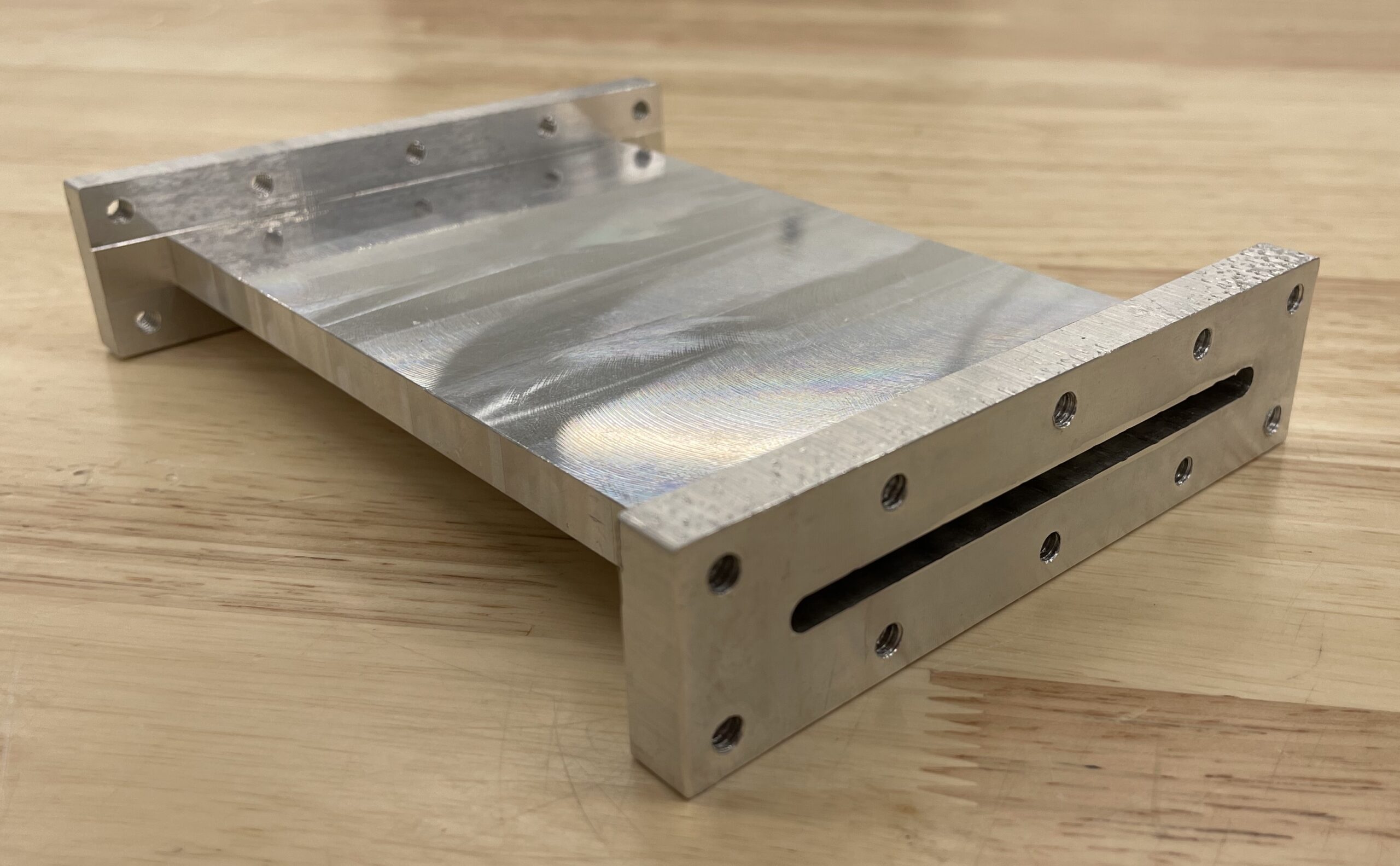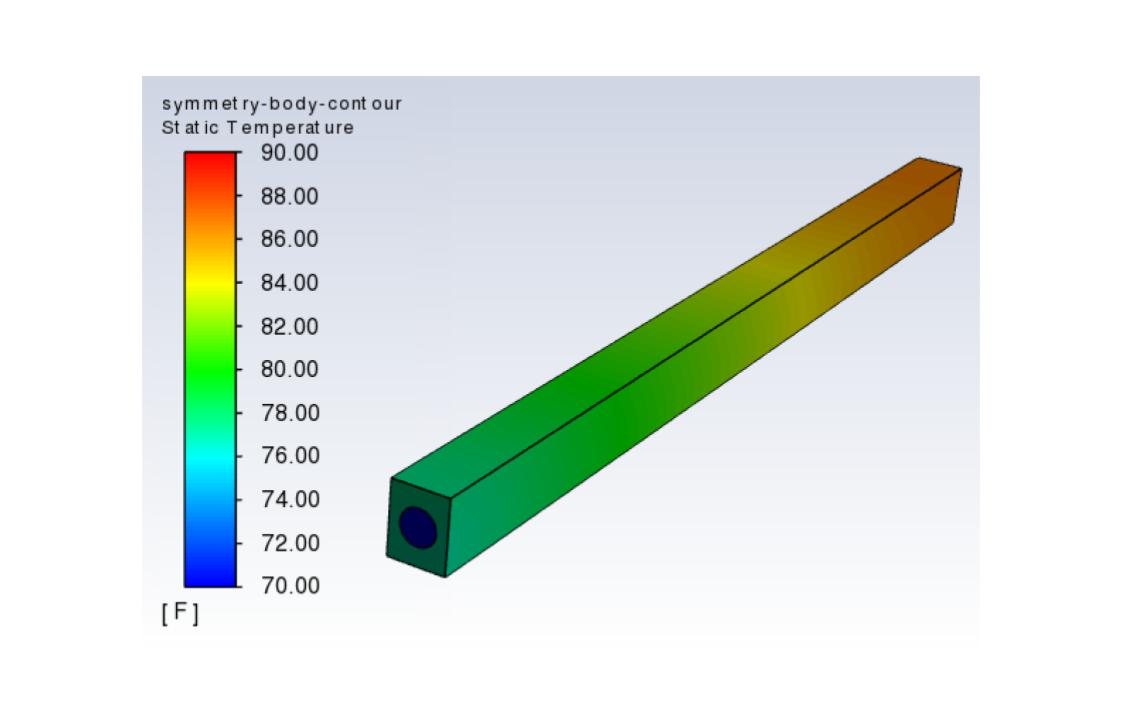
Figure 1

Figure 2

Team 16
Team Members |
Faculty Advisor |
Logan Wojnarowski |
Bryan Weber Sponsor Collins Aerospace |
sponsored by

The Design and Testing of a 3D-Printed Plastic Cold Plate
In the space industry, cold plates are a common form of heat exchanger used to cool down avionics equipment. These cold plates are currently manufactured out of 6061-T6 Aluminum, which is a well tested and effective material for this application. However, these aluminum cold plates are heavy, expensive, difficult to fabricate, and must be treated for corrosion prevention. With the recent widespread adoption of additive manufacturing technology, the purpose of this project is to see if a thermally conductive 3D printed plastic can serve as a comparable replacement to the traditional aluminum material. The 3D printed plastic used in this project is known for being more thermally conductive than other 3D printed plastic materials, is lighter than aluminum, and would require no corrosion treatment or machining, only the time it takes to be grown. By comparing two identical cold plate models, one machined from solid aluminum and the other grown through additive manufacturing, our goal is to see if the steady state thermal performance of the 3D printed plastic cold plate can be reasonably compared to that of an aluminum counterpart. This project includes forming an analytical model, performing simulations in ANSYS Fluent, and conducting experiments using a constructed test rig. The results of our project come in the form of a series of normalized temperature relations which Collins Aerospace can use to determine whether or not the use of a thermally conductive 3D printed plastic can effectively replace aluminum in their cold plate applications.
